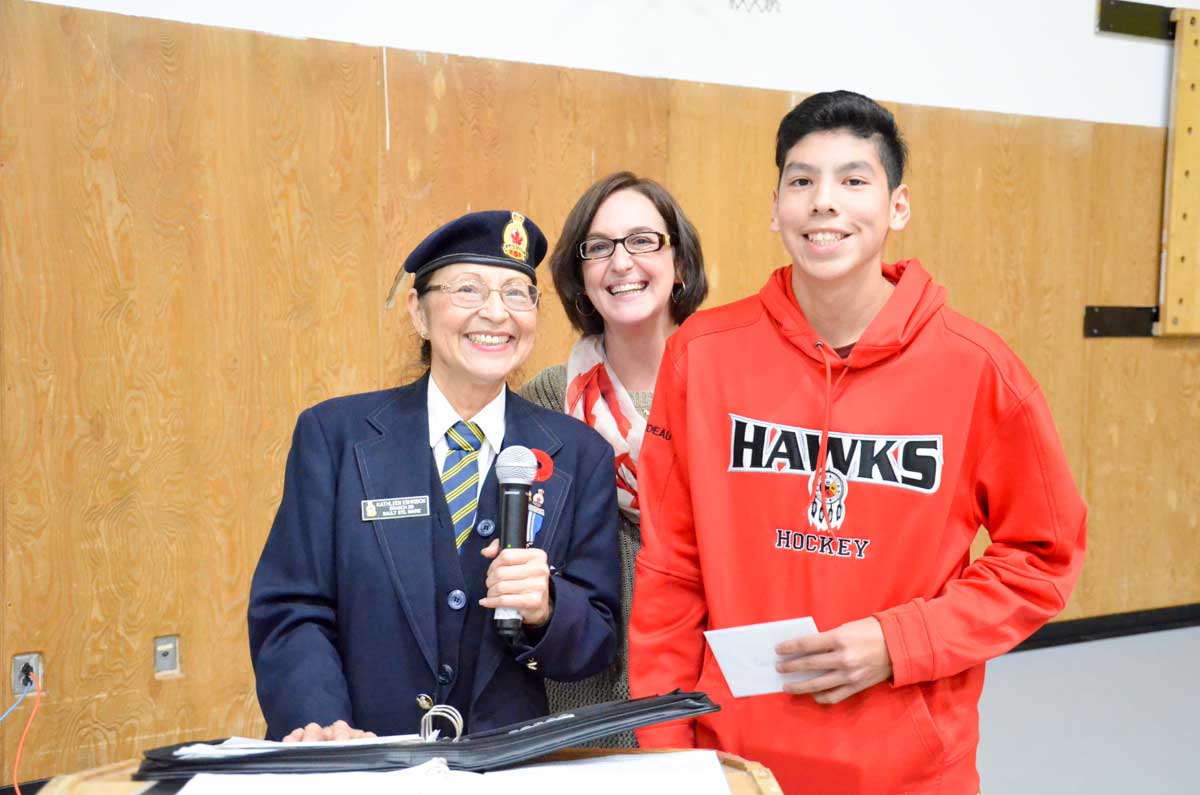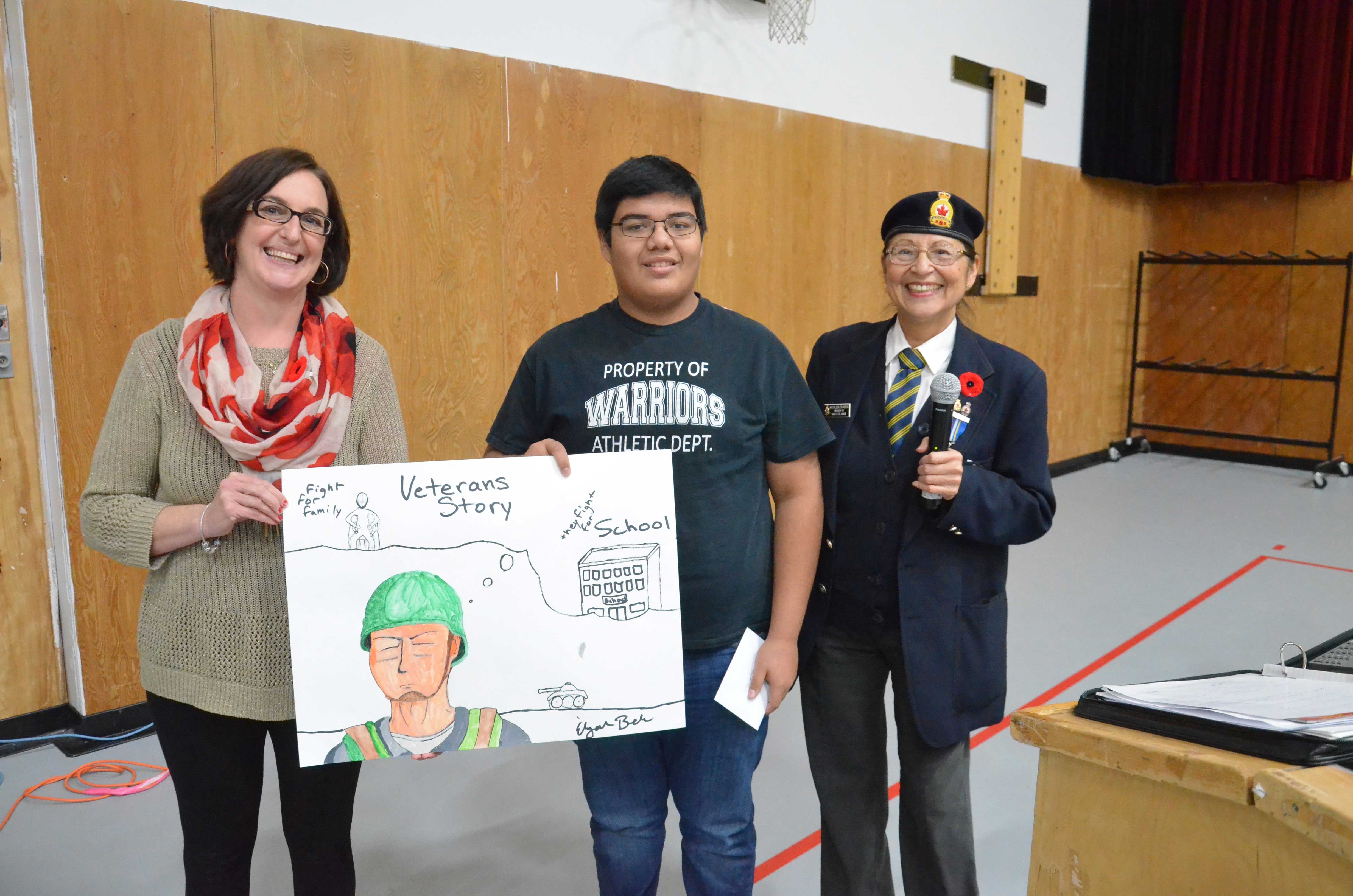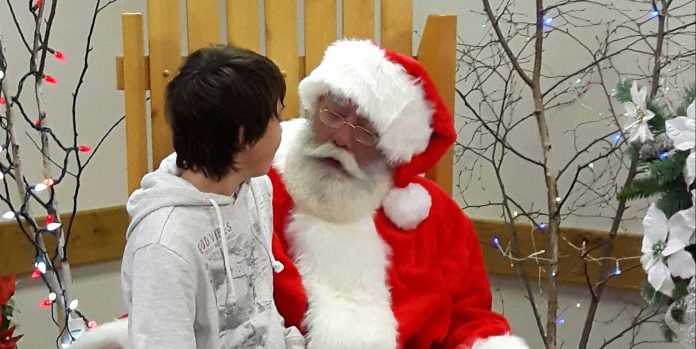WIIKWEMKOONG—Little Current Royal Canadian Legion Branch 177 member Kathleen Eshkibok declared herself ecstatic over the response to the ‘Veteran’s Story’ essay and art contest she initiated as part of her vision to see today’s Anishinaabe youth explore the sacrifices made by their relatives when they stepped up to serve in the Canadian and American forces during both world wars and other conflicts, despite being exempt from such service and paying a cost in their own nationhood to do so.
“Would you give up your citizenship to go fight for your country?” she asked. “This was the choice that faced the Anishnaabek when they stepped forward to enlist. You were enfranchised (given citizenship and the right to vote in Canadian elections, most First Nations residents did not have that right prior to the 1960s) and if you lived off of the reserve for four years you were removed from the band list.”
There are two categories in the contest whose winners were announced at the Remembrance Day ceremonies held November 10 at the Wiikwemkoong High School. The collage/visual arts or mixed media category top prize of $300 went to Julianna Pitawanakwat and the $100 second prize went to Elija Bell. First prize in the essay portion of the contest went to Jasmyn Manitowabi and the $100 second place essay prize went to Gabriel Trudeau.

Ms. Eshkibok stressed that she is not alone in creating Veterans’ Story. “Samantha Cooper has helped me a lot and Natalie Neganegijig at the Youth Centre did the poster,” she said.
“I want to thank all of the students who wrote the names of all of the veterans on the poppies in the entrance to the school,” added Ms. Eshkibok as she presented the award winners with their prizes.
First prize winner Jasmyn’s essay explored the service of the patriarch of her family and Wiikwemkoong legend Andrew Manitowabi, founder of the economic powerhouse known as Andy’s and the Andrew Manitowabi Group.
Jasmyn’s essay follows below.
“Andrew (Andy) Manitowabi was an outstanding and strong man who enlisted in the Second World War on June 4, 1939 at the age of 19. Andrew went to Little Current one day with his friend Walter Mejaki, the both of them came across a sign saying ‘join the army and see the world.’ They found it very interesting and exciting. They both enlisted their parents (support) to go to war! Andrew left his home at Wiikwemkoong Unceded Indian Reserve to go train as an engineer from Little Current to Toronto at the Exhibition centre. Their engineer unit built bridges, blew up land mines, repaired roads and army trucks. The Second World War was North of Rome in Italy. Everywhere Andrew and his crew went they would carry their rifles with them because there was so much fighting going on. The trenches they built were two feet deep and that’s where they would sleep, 20 of Andrew’s crew who were sleeping nearby in a tent were blown up bad. Andrew and the other four or five of them stayed in Toronto for about two weeks to train and getting organized for their unit, they were moved to Petawawa and stayed their for about six months and got moved again to Nova Scotia. It was their unit 8 that was in 1942 in May.

“Andrew used all kinds of weapons such as rifles, machine guns, heavy artillery, the aircraft had bombs and so much more. Andrew’s training was to build bridges and landmines since he was a disciplined soldier, he had to do what he was asked and told to do. The equipment he operated was he had a rifle, everyone of them had a rifle to carry around. The crew had to learn how to drive trucks and jeeps and Andrew learned how to drive in the war.
“At the end of the Second World War in 1945, Andrew received a Defence Medal, Volunteer Medal, Italy Medal, France Medal and the England Medal.”




